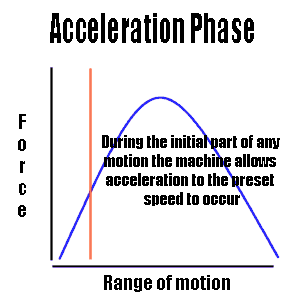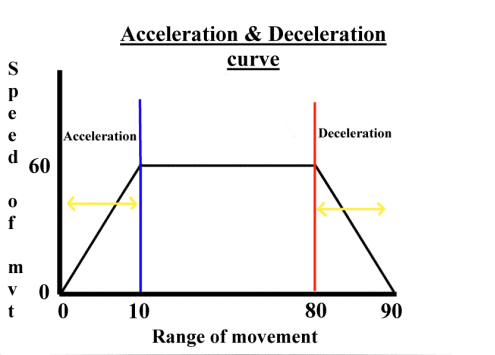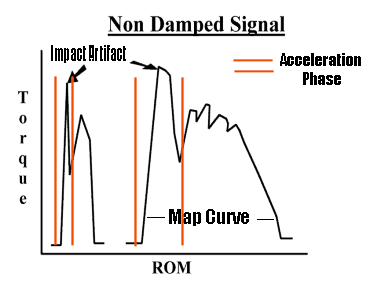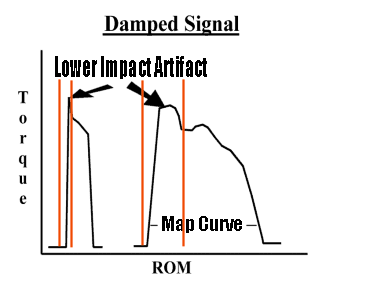Whenever a movement is performed isokinetically we set a pre determined speed for the actuator to turn around (we presume the joint turns at a speed relative to this).
However when the subject is waiting to begin the movement the machine is obviously not moving.
So if we set an exercise to be performed at 60 degrees per second there would have to be a period at the beginning where the machine accelerated (or allowed acceleration) during which time minimal resistance would have to occur (otherwise no acceleration).
This is demonstrated in this MAP curve.

As can be seen the acceleration phase takes up a percentage of the total movement recorded. When this (and the deceleration phase) are removed we have the isokinetic range of motion (IROM) as the total ROM is not all isokinetic movement.

In the example shown above it takes 10 degrees of the range of motion before the pre-set angular velocity (PAV) is reached and another ten degrees at the end for deceleration. This means the IROM is only 70 degrees in total.
Because the acceleration phase involves minimal resistance (in theory anyway) there will generally be a build up of momentum before the PAV is reached. Once the machine begins to slow the acceleration to stabilize the speed to the PAV there will be a build up in the force reading making a ‘spike’ in the curve (see below).

This has been called the impact artifact (or torque overshoot, impact torque, moment overshoot or overshoot). This spike does not represent muscle performance at the pre-set velocity. They only occur during the acceleration and deceleration phases (often referred to as moment signal transience).
To overcome this problem many companies now automatically ‘dampen’ this signal in the machines software so you do not receive invalid results (a dampened signal can be seen below).

The energy expended during the acceleration phase is often recorded as the peak torque acceleration energy (PTAE) this is the amount of work performed in the first 125 ms of a torque production cycle. It is supposed to reflect explosive power as it assesses the speed and rate of torque production.
Most modern dynamometers allow the user to alter the acceleration and deceleration phases (cushions on Cybex norm and end stops on Kin-Com AP) remember if you set them too wide i.e. long acceleration and deceleration phases then the movement will be smoother but over a smaller IROM.